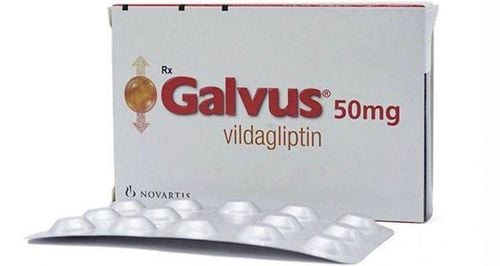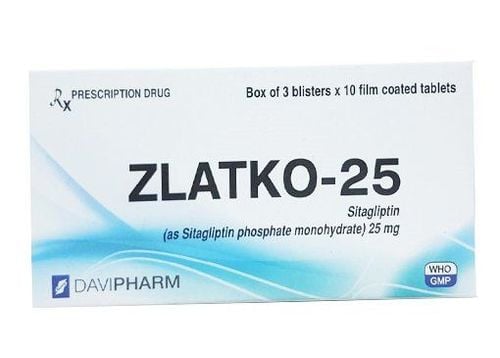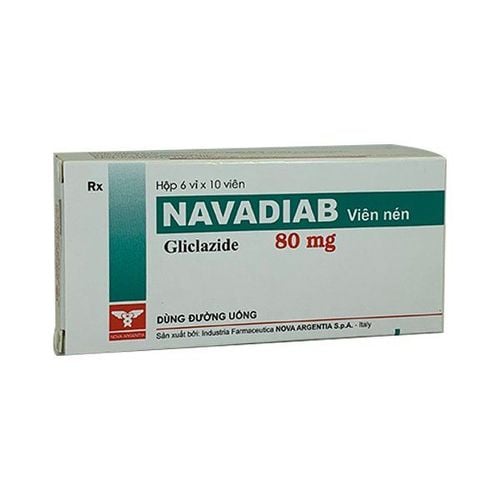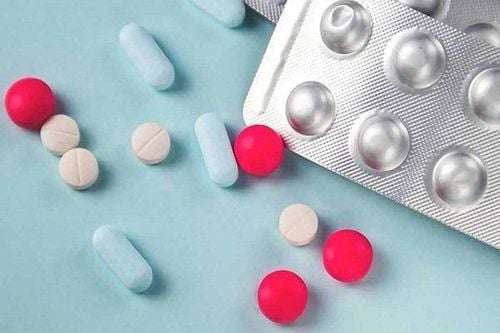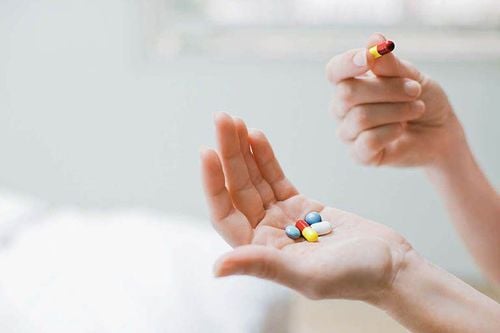This is an automatically translated article.
Farlita belongs to the group of hormones, hormones, which are used to support people who are on diet and exercise to improve blood sugar control due to type II diabetes. Let's find out what Farlita does through the article below.1. What is Farlita?
Farlita drug has the main active ingredient Pioglitazone HCL and other excipients just enough. The drug is prepared in the form of tablets, packed in boxes of 3 blisters, each blister x 10 tablets.2. Uses of the drug Farlita
2.1. Uses - indications for the use of Farlita
Farlita is indicated to support people with type II diabetes who are following diet and exercise to improve blood sugar control. Pioglitazone is indicated for use alone or in combination with other active ingredients such as sulfonylurea, metformin or insulin when diet, exercise, or single medication is inadequate to control blood glucose levels. .
2.2. Contraindications to the use of Farlita
Farlita is contraindicated in people who are allergic or sensitive to any of its ingredients. Farlita should not be used in patients with a history of liver disease or elevated serum transaminase levels. These individuals should be carefully monitored for liver enzymes before starting treatment with Pioglitazone and periodically thereafter. Farlita should not be given to children under 18 years of age. Note: Contraindication should be understood as an absolute contraindication, that is, for any reason, those contraindications should be flexible to use Farlita, to avoid affecting the body's health. body.3. How to use and dose of Farlita
How to use: Farlita is prepared in the form of tablets that should be taken orally. Patients can drink with or without food, it is recommended to drink with a sufficient amount of water, not combined with other liquids such as alcohol, beer, carbonated drinks. When taking, do not break or crush the tablet to avoid affecting the ingredients in the medicine.Dosage:
Usual dose: Should not exceed 45mg/time/day because doses higher than 45mg/day have not been studied for safety for users. As a monotherapy:
Start with 15mg or 30mg once daily in patients not adequately controlled with diet and exercise alone. The dose may be increased to 45 mg once daily for those who do not respond to the initial dose. For patients unable to respond to monotherapy, combination therapy should be switched. Combination therapy:
Combination with Sulphonylurea: Start with Pioglitazone 15mg or 30mg/time/day. The current dose of Sulphonylurea can be continued at the start of treatment with Pioglitazone. If the user experiences hypoglycemia, the dose of the sulphonylurea needs to be reduced. Combination with Metformin: Start with Pioglitazone 15mg or 30mg/time/day. The current dose of metformin can be continued at the start of treatment with Pioglitazone. When combined with Metformin, dose adjustment is rarely required. Combination with Insulin: Start with Pioglitazone 15mg or 30mg/time/day. The current insulin dose can be continued when starting treatment with Pioglitazone. The insulin dose should be reduced by 10-25% if the user develops hypoglycemia or the plasma glucose level falls below 100 mg/dL and must be adjusted according to the individual patient's degree of hypoglycemic response. Note: Farlita dosage above is for reference only. Before using the drug, each patient needs to be examined, diagnosed and prescribed by a qualified doctor to get the most appropriate dose for their current health.
In case of missed dose: User can take it as soon as he remembers, however, if it is too close to the next dose in the prescription, skip the missed dose and take the next dose. It is recommended not to take double the amount of medicine to make up for the previously forgotten dose, to avoid leading to an overdose.
In case of overdose of Farlita : If the patient discovers that he has taken an overdose of the drug and notices unusual symptoms suspected of taking the drug, it is necessary to immediately notify the treating doctor or medical professional. If dangerous, call 911 immediately or go to the nearest hospital for quick treatment and treatment. When going, family members should bring with them the medicines and medical records that the patient is using so that the diagnosis process becomes faster.
4. Farlita side effects
In the process of using Farlita, in addition to the main use of the drug, patients may also experience some unwanted side effects such as:Headache, muscle pain, sinusitis, sore throat, bacterial infection upper respiratory tract. May cause an increased risk of edema when combined with insulin. Causes mild to moderate hypoglycemia. Causes anemia when combined with the active ingredients sulfonylurea, metformin and insulin. Causes abnormal results when performing tests. Note: If you find yourself experiencing the above symptoms or other strange symptoms that have not been recorded, the patient should immediately inform the treating doctor about the current physical situation and if necessary. If necessary, immediately go to the nearest hospital for timely treatment.
5. Interactions with drugs Farlita
When using the drug, users should note the following interactions with Farlita:With oral contraceptives such as ethinyl estradiol and norethindrone: Reduces the effectiveness of oral contraceptives. Care should be taken when using Farlita with tobacco, alcohol, alcoholic or fermented beverages. These substances can change the ingredients in the medicine. Note: Drug interactions may change how Farlita works or may increase the effect of side effects. Patients need to inform the doctor or pharmacist of all drugs, vitamins, functional products, herbs to get the most appropriate advice.




